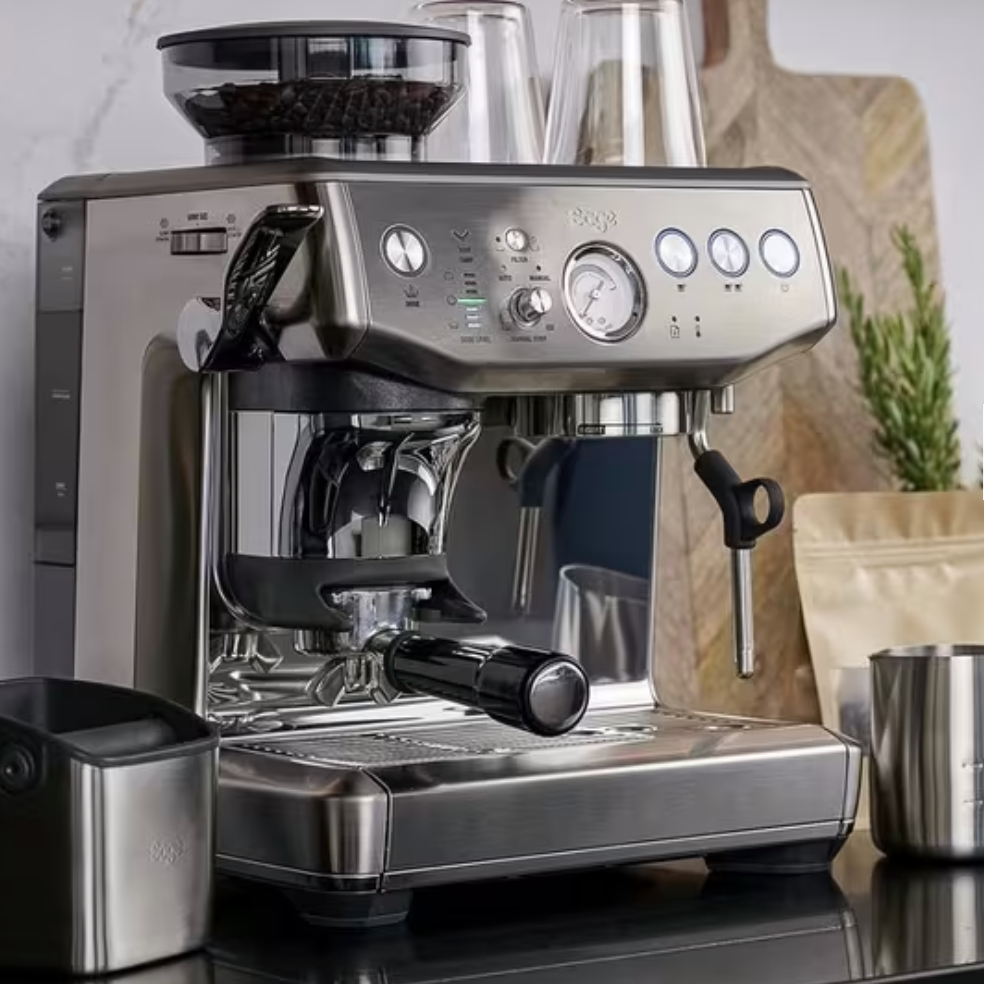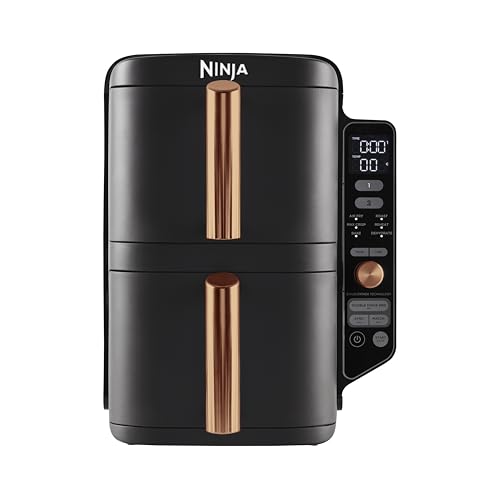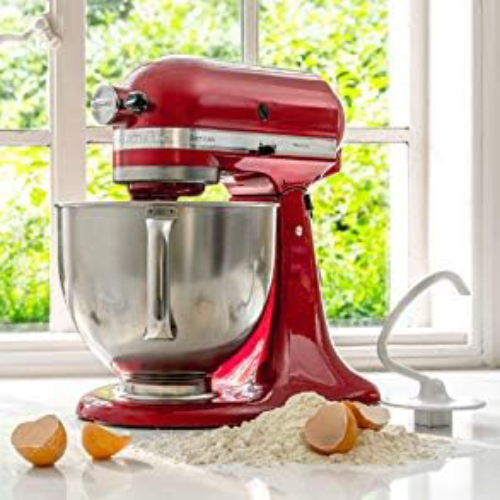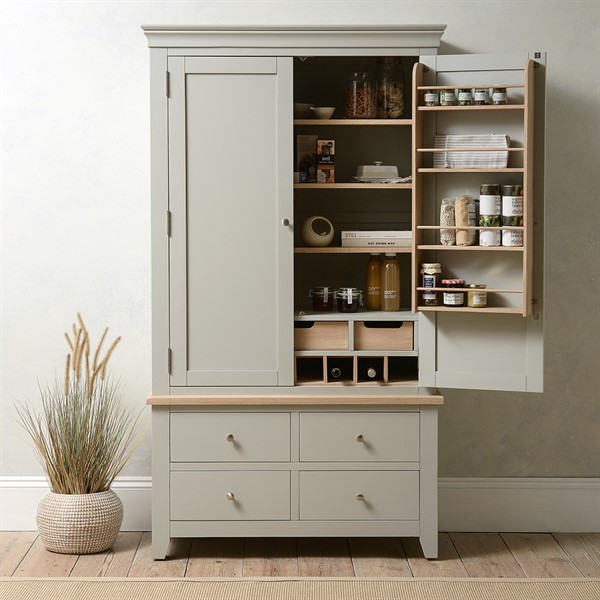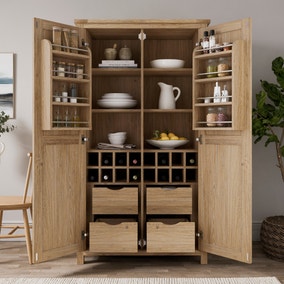Pantry or larder — is there a difference and which one do you need?
Not sure whether you need a pantry or larder? Here's the difference and how to choose the right one for your new kitchen
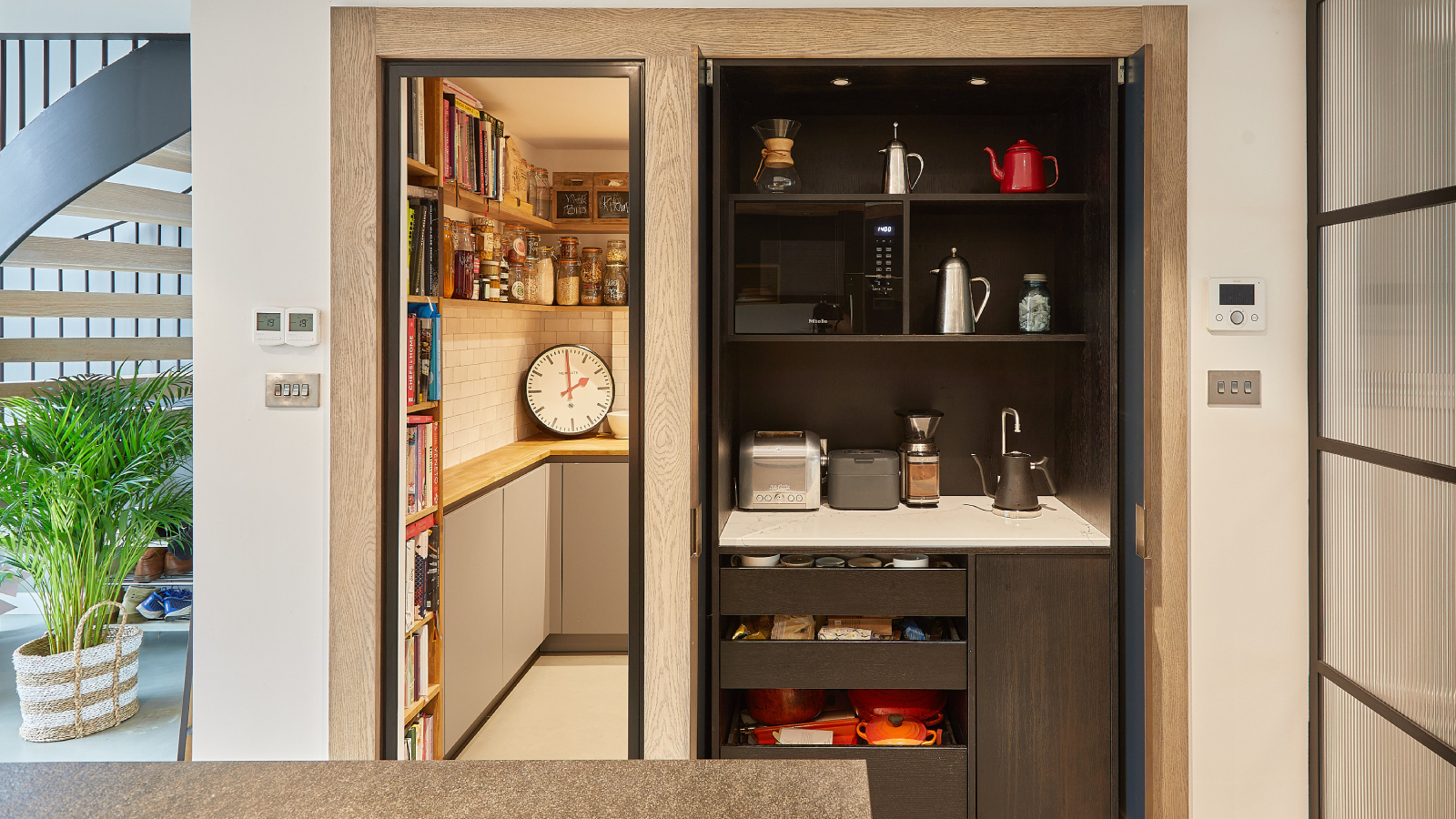
If you're considering a new kitchen, it's likely you'll have come across the growing trend for pantry ideas. Perfect for homeowners who lean towards an uncluttered kitchen, they're being touted as the design feature you can't do without.
But, if you're not sure whether there's a difference between a pantry or larder you're in the right place. While the terms were once used to mean different things – mainly due to the types of food each one was used to store – the lines between them are no longer as clean cut as they were.
Now, it's more about space, size and how we use our kitchens that dictates whether you have a pantry or larder and what how you use it.
Whether it's a pantry or larder, why have they become so popular?
Kitchens have always been the heart of the home and are one of the major investments a homeowner will make. As such, they are constantly evolving and developing in line with the way we live, eat and consume.
Debra Hutt, kitchen expert at Wren Kitchens, explains: "We have seen the popularity of pantries rise throughout 2024, and they’re expected to become a breakout kitchen trend for 2025.
"Homeowners are increasingly looking to showcase their kitchens and their carefully curated collections of produce. Appliances like coffee machines and premium food products have also transformed into aesthetic luxuries," she adds, "making pantries which can store these types of items not just practical, but also a statement feature in modern homes.”
No space for a dedicated walk-in pantry idea? That's okay too say the experts as once you understand the benefits of a pantry or larder, you can usually create a kitchen design that meets the brief.
Bring your dream home to life with expert advice, how to guides and design inspiration. Sign up for our newsletter and get two free tickets to a Homebuilding & Renovating Show near you.
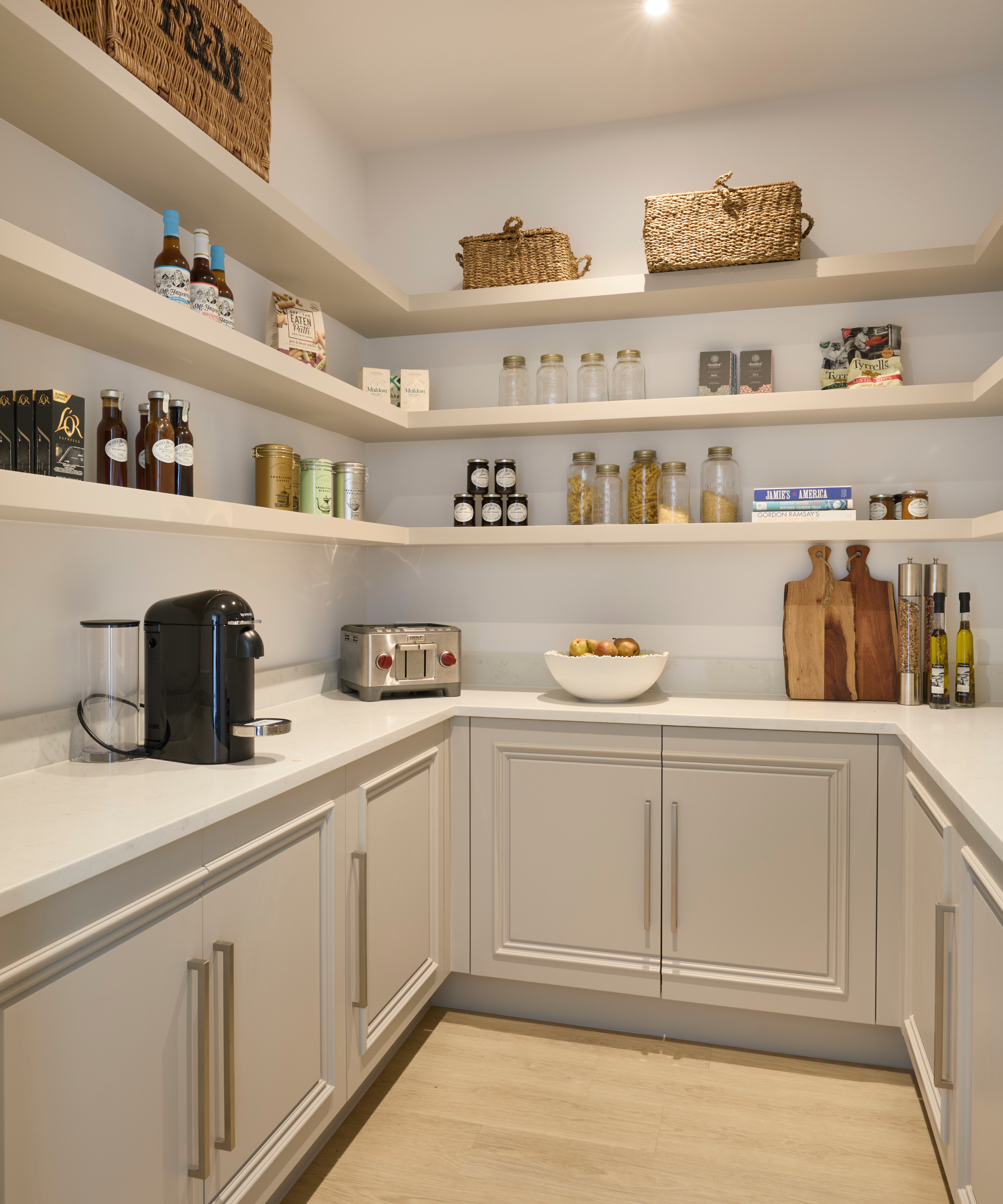

Debra Hutt is the Head of PR and Supplier Relations at Wren Kitchens, where she has contributed over five years of expertise during a period of rapid, strategic growth.
Showcase these small appliances in your new pantry
What is a pantry?
"A kitchen pantry is a small room or designated area in or near the kitchen used for storing food, cookware, and other kitchen supplies," explains Charlie Smallbone, founder of Ledbury Studio.
"It is typically used to store non-perishable items such as canned goods, grains, spices, oils, and dried foods, as well as cleaning products and small kitchen appliances."
The benefit of them? "Pantries help keep the main kitchen organised and ensure easy access to ingredients and kitchen tools," says Charlie.
However, although many are rooms in their own right, if space is limited, "they can be built into cabinets, walk-in spaces, or even freestanding units, depending on the available space and design preferences," he adds.
"Modern pantries are also designed to fit seamlessly into kitchens and include features like adjustable shelving, spice racks, and drawers for optimal organization," adds Debra Hutt. Positioned strategically near workspaces and cooking areas, pantries offer convenience, aesthetic appeal, and improved efficiency for everyday kitchen tasks.”
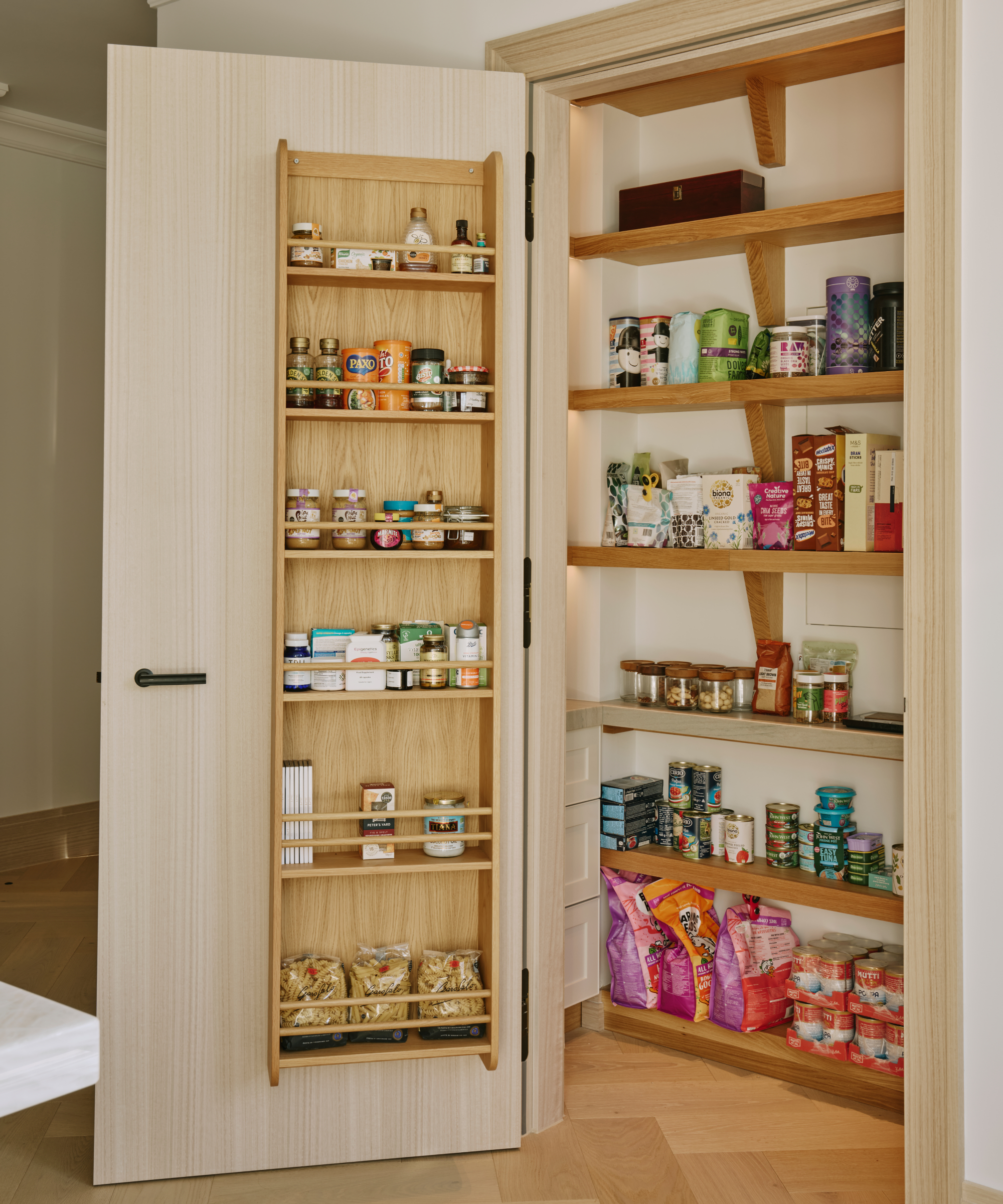
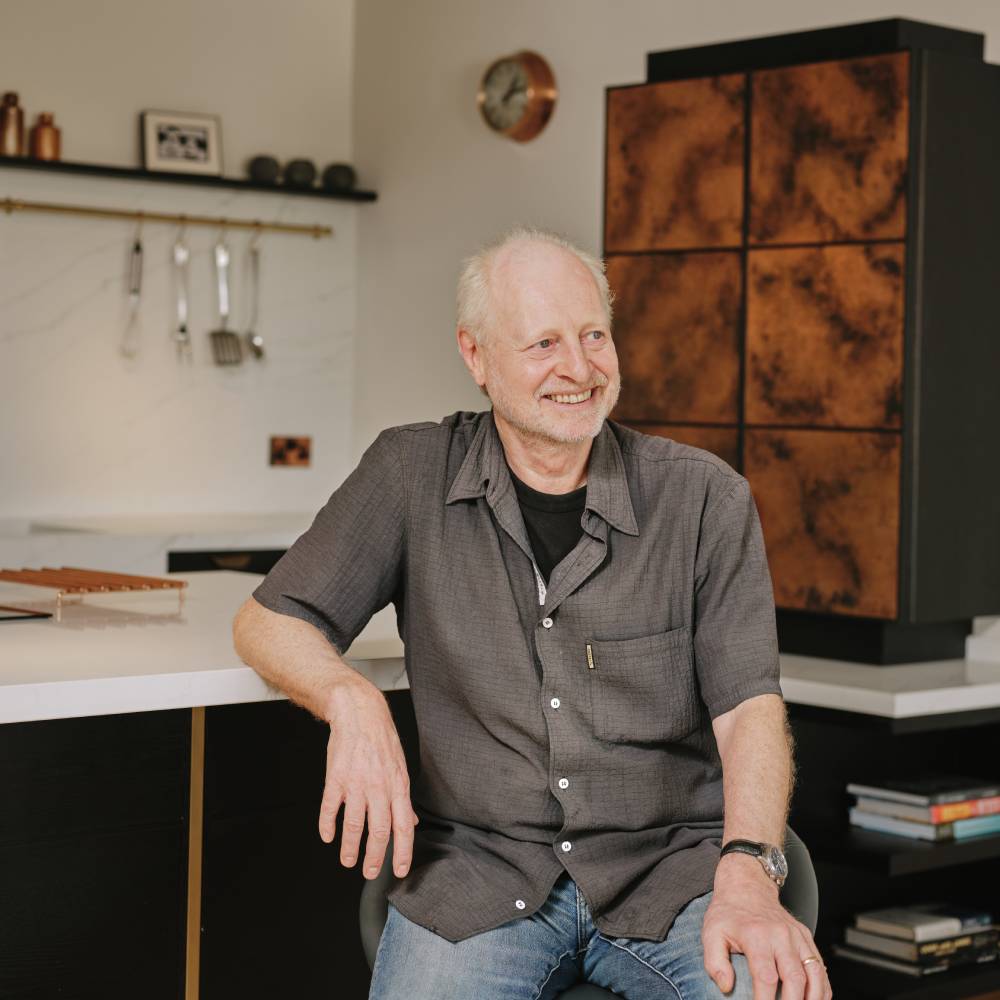
Charlie Smallbone was the founder of bespoke furniture brand Smallbone of Devizes and has been pushing the boundaries of kitchen design for over 40 years. Charlie’s current venture, Ledbury Studio, was born of his desire to harness the beauty of natural materials while creating practical kitchens that exude style and elegance.
What is a larder?
Whereas pantries were, and are still used for dry goods or household products, larders were originally designed with an alternative purpose in mind. "Traditionally, larders were rooms or cupboards designed to keep food fresh before the advent of refrigeration," Charlie Smallbone explains.
"However, modern larders are now stylish and practical additions for housing dry goods, canned items, and even small appliances," says Debra Hutt. "They can range from freestanding cupboards to integrated units, with features like pull-out shelves and spice racks, making them ideal for maximizing space and functionality in both compact and larger kitchens.”
"Larders can also be a designated space or cupboard used for storing both perishable and non-perishable items," says Charlie Smallbone. Examples of such items include root vegetables, certain fruits, bread, nuts and seeds, dried foods, and spices and herbs."
"The space is often equipped with shelves, drawers, and sometimes cooling appliances to help keep certain foods fresh, as not all perishable items belong in the fridge, but many still require a cool, stable environment," he tells us.
However, and this is where the lines between a pantry and larder can be blurred, as quite often, if space permits, homeowners may look to create a hybrid pantry/larder that covers all your requirements.
"If you have the available space, the best solution," says Charlie, "is to create a larder in a cool, dark part of the kitchen, away from direct sunlight and heat sources, possibly with some form of passive or active cooling system to maintain a stable temperature. This setup ensures that items requiring a cool environment stay fresh for longer without necessarily needing refrigeration."
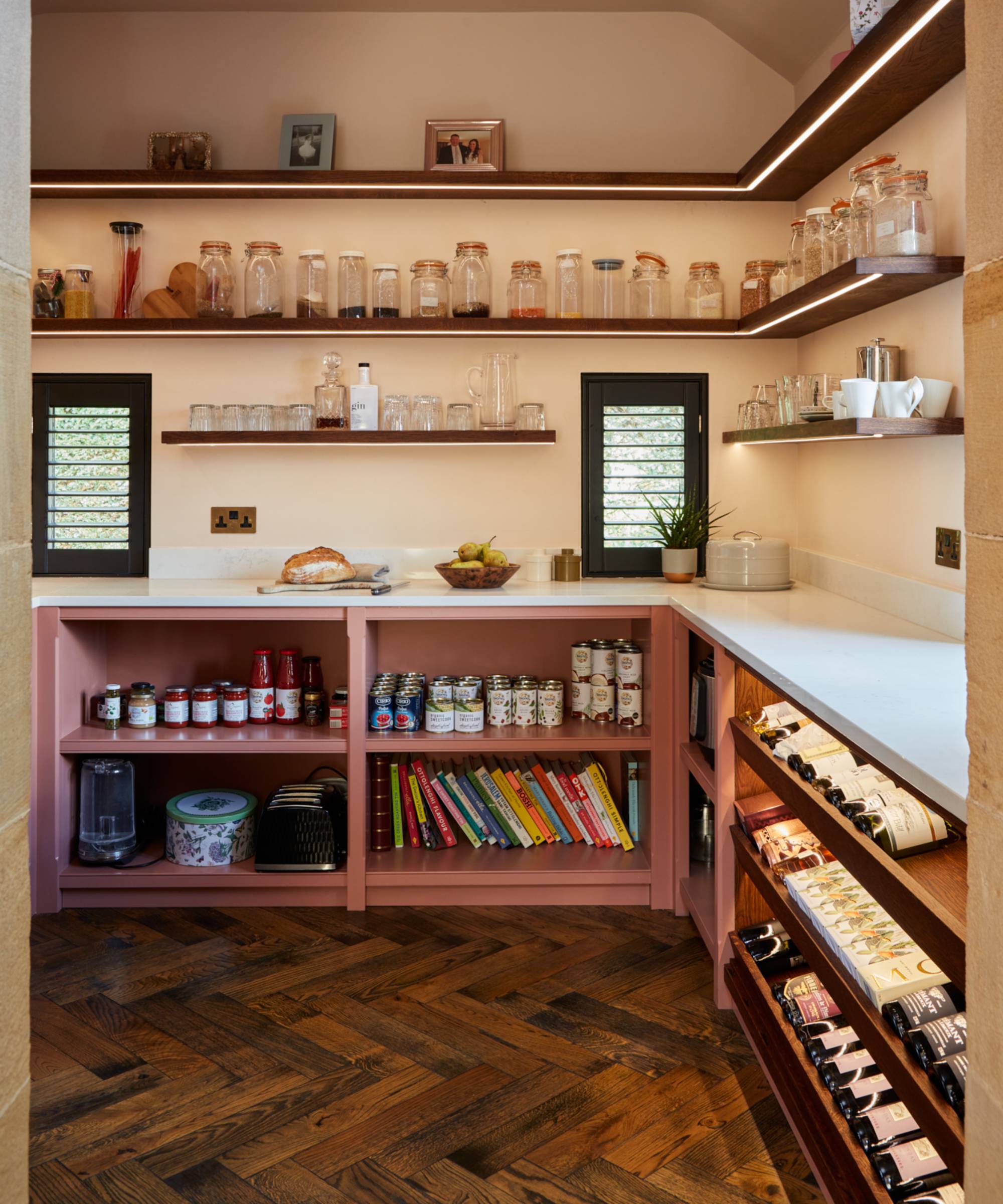
Pantry or larder – how to make the most of your available space
If you're struggling with space and not sure you have room for a pantry or larder Cassie Jones, brand manager at Masterclass Kitchens says it's still possible to experience some of the benefits of this type of storage design, even with a limited floor plan.
"Corner pantries make great use of awkward spaces, although they can sometimes be harder to access than front-facing options so make sure this won't compromise their benefits.
"Pull-out larders and base pull-out units are also ideal for maximising storage in compact areas," she says, "offering clear visibility and easy access to items."
"Smaller kitchen larders can be added into existing cupboard space without changing any architectural elements," agrees Debra Hutt. "For a similar effect on a budget, larders are an excellent alternative," she says.
"For those with larger kitchens or extra space to work with, a walk in pantry is an impressive addition that adds both functionality and style," she adds. "They can also be incorporated into a back kitchen and are excellent for keeping kitchens clutter-free and freeing up extra room for cooking, dining, socialising and relaxing.”
However, if you do want to create a space that functions as both pantry and larder, "this will require more long-term planning than a larder, as it must be built into the architecture of a kitchen."
'For those seeking a multifunctional option in a smaller kitchen idea, that replicates the feel of a walk in space, a breakfast dresser is a stylish way to create a mini kitchen hub," suggests Cassie Jones. "Use bi-fold or pocket doors to conceal the space when not in use and include internal lighting and power points to house appliances like toasters or coffee machines."


Cassie Jones is the brand manager at British kitchen manufacturer Masterclass Kitchens. Crafting beautiful, functional spaces with nearly 50 years of expertise, their range includes timeless handled designs, modern handleless kitchens, and the Signature Collection, bespoke-style storage at an attainable price. From chef’s pantries and breakfast dressers to cocktail cabinets, they offer tailored, affordable luxury to suit every lifestyle.
Shop these freestanding pantry and larder units
Combining your utility with a pantry or larder
Wondering if you could just use your utility room instead as a pantry or larder? Charlie Smallbone offers the following advice.
"Using a utility room as a pantry or larder – essentially combining laundry and food storage – frees up kitchen space for other uses and keeps both laundry and food items organised in one location," says Charlie. "However, there are significant downsides to be aware of. Washers and dryers generate heat, raising the temperature in the utility room, which is not ideal for storing perishable items that require a cool, stable environment.
"Additionally, these appliances can increase humidity levels, potentially leading to moisture problems that can affect the shelf life of certain dry goods and contribute to mildew or mould growth," he adds.
"Cleanliness and hygiene are also concerns, as laundry detergents, cleaning supplies, and dirty laundry can create an environment that is less hygienic for food storage. Moreover, strong smells from detergents and cleaning agents could affect the stored food.
"To mitigate these potential downsides, ensure proper ventilation to dissipate heat from appliances," says Charlie, "and consider installing a small kitchen extractor fan or air conditioner to maintain a cooler environment.
"Using the best dehumidifier to manage humidity levels and prevent moisture-related issues is also advisable. It's important to keep food storage separate from laundry appliances by using sealed containers for dry goods to protect them from humidity and odours."
FAQs
How much space do you need for a pantry or larder?
"When planning a larder, the space you need will depend on its intended use and style," says Debra Hutt.
"For example, a traditional pantry, often a standalone unit or small room, is ideal for larger kitchens with a preference for classic design. If you’re considering a walk-in larder, I recommend a minimum of 4 ft by 4 ft with a ceiling height of at least 7 ft. However, for those looking to optimize storage, increasing the size to 6 ft by 6 ft provides significantly more room to organize and access items efficiently."
Larders on the other hand don't need as much space says Debra.
"You don’t necessarily need a lot of space to incorporate a larder into your kitchen design. Even in smaller rooms, a dedicated unit or a narrow space at the end of a run of cabinets can be converted into an efficient larder. Corner units can also work well for maximizing storage in compact areas.
"For kitchens with more height and depth, a pull-out larder is an excellent option for optimizing storage without requiring additional floor space. Larders can be seamlessly integrated into existing cabinetry, blending functionality with aesthetics while making the most of the space you have available," she adds.
What are the alternatives to a pantry or larder if space is limited?
"If space is limited or you prefer a more modern aesthetic over traditional freestanding larders, there are plenty of contemporary alternatives to consider," says Debra Hutt.
"Pull-out larder storage is a particularly effective solution. Designed to seamlessly blend into your kitchen cabinetry, these units resemble standard cupboards from the outside. However, once opened, they slide out to reveal a surprisingly generous storage capacity, far exceeding that of a typical cupboard or drawer," she explains.
"Floor-to-ceiling units are especially popular for maximizing vertical storage, while floor-to-worktop height options are ideal for smaller kitchens or specific storage needs," suggests Debra.
In the process of designing a kitchen extension and wondering what the best layout is for including your pantry or larder aspirations? Find out what the experts say about open plan vs broken plan kitchen extensions to see which layout will give you the best solution to your needs.

Sarah is Homebuilding & Renovating’s Assistant Editor and joined the team in 2024. An established homes and interiors writer, Sarah has renovated and extended a number of properties, including a listing building and renovation project that featured on Grand Designs. Although she said she would never buy a listed property again, she has recently purchased a Grade II listed apartment. As it had already been professionally renovated, she has instead set her sights on tackling some changes to improve the building’s energy efficiency, as well as adding some personal touches to the interior.
